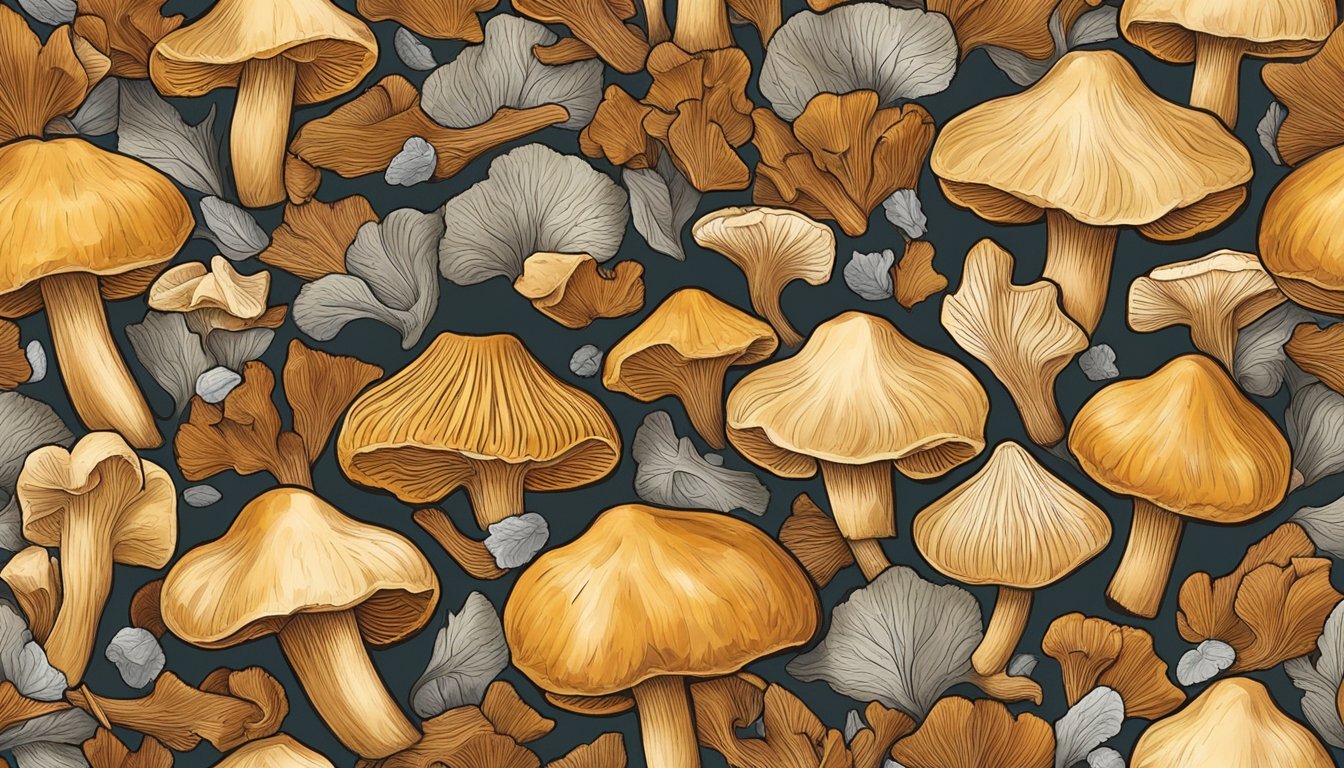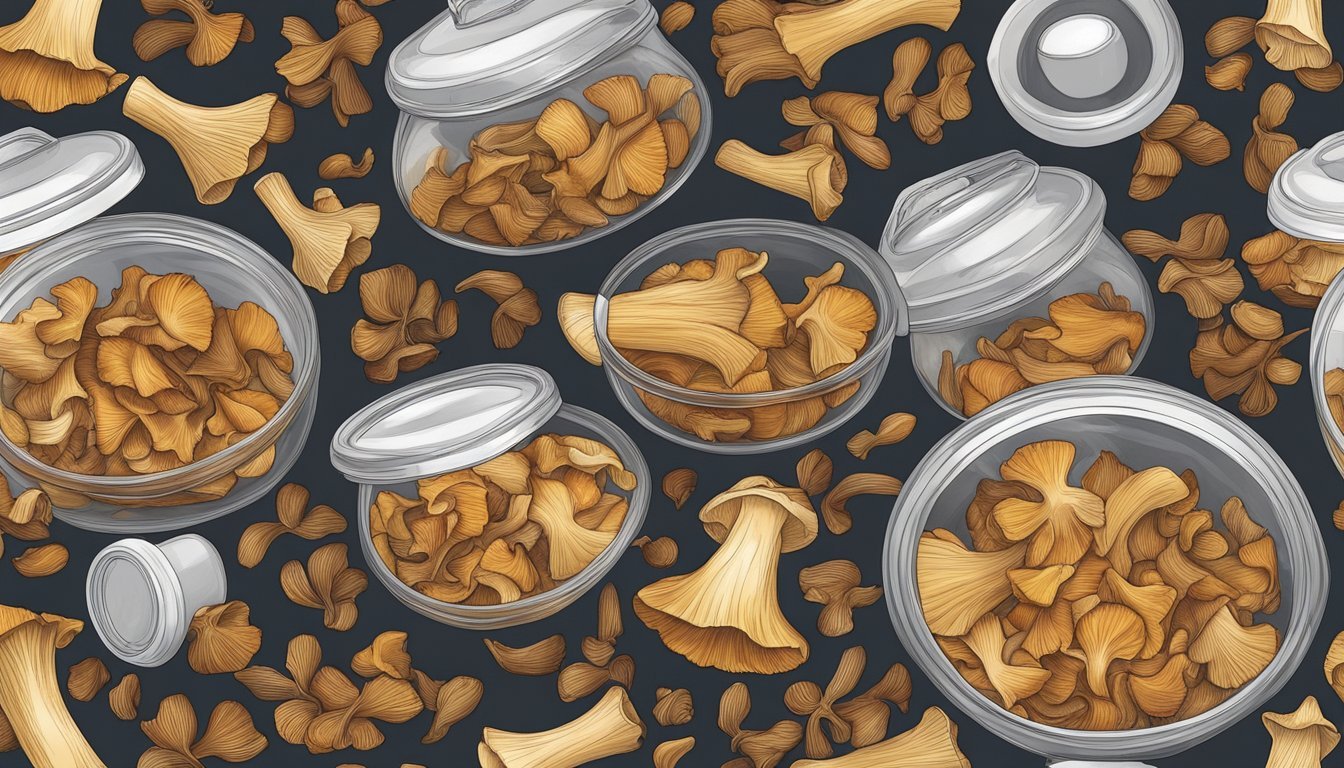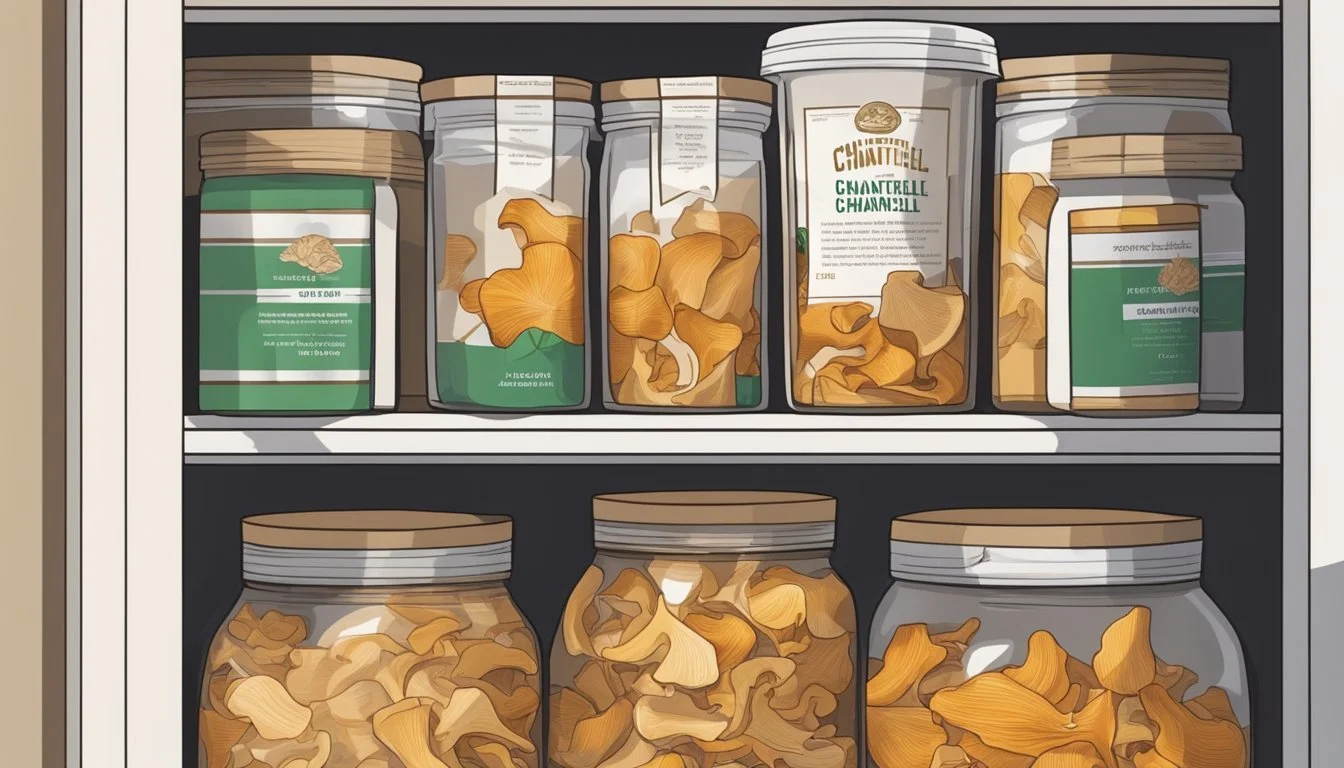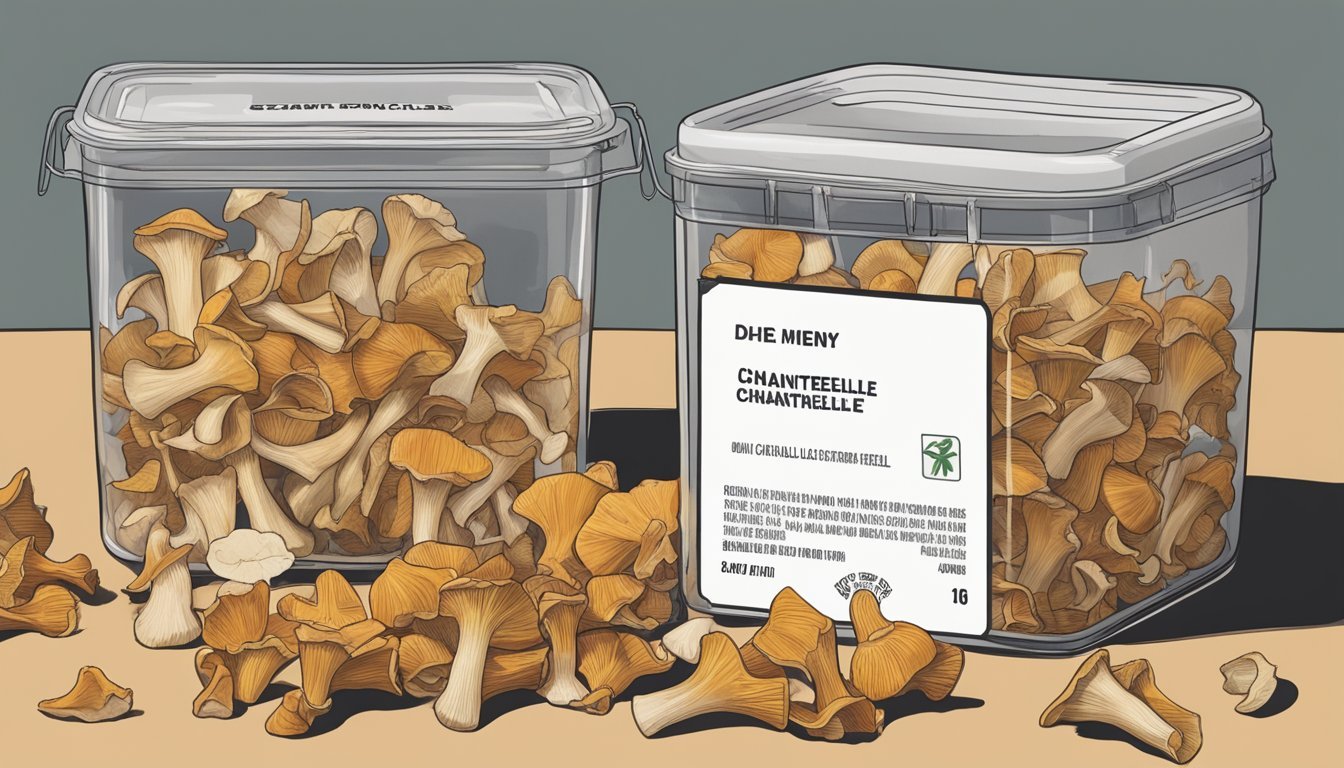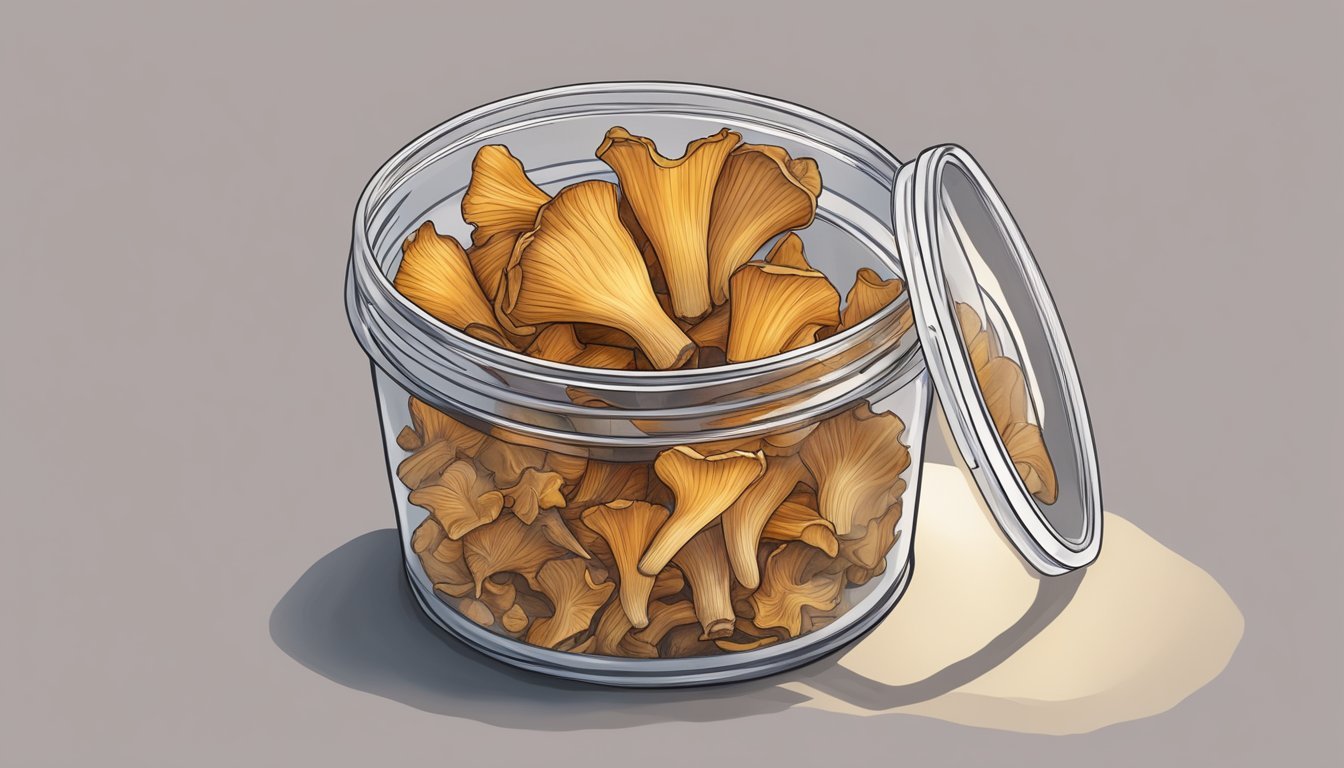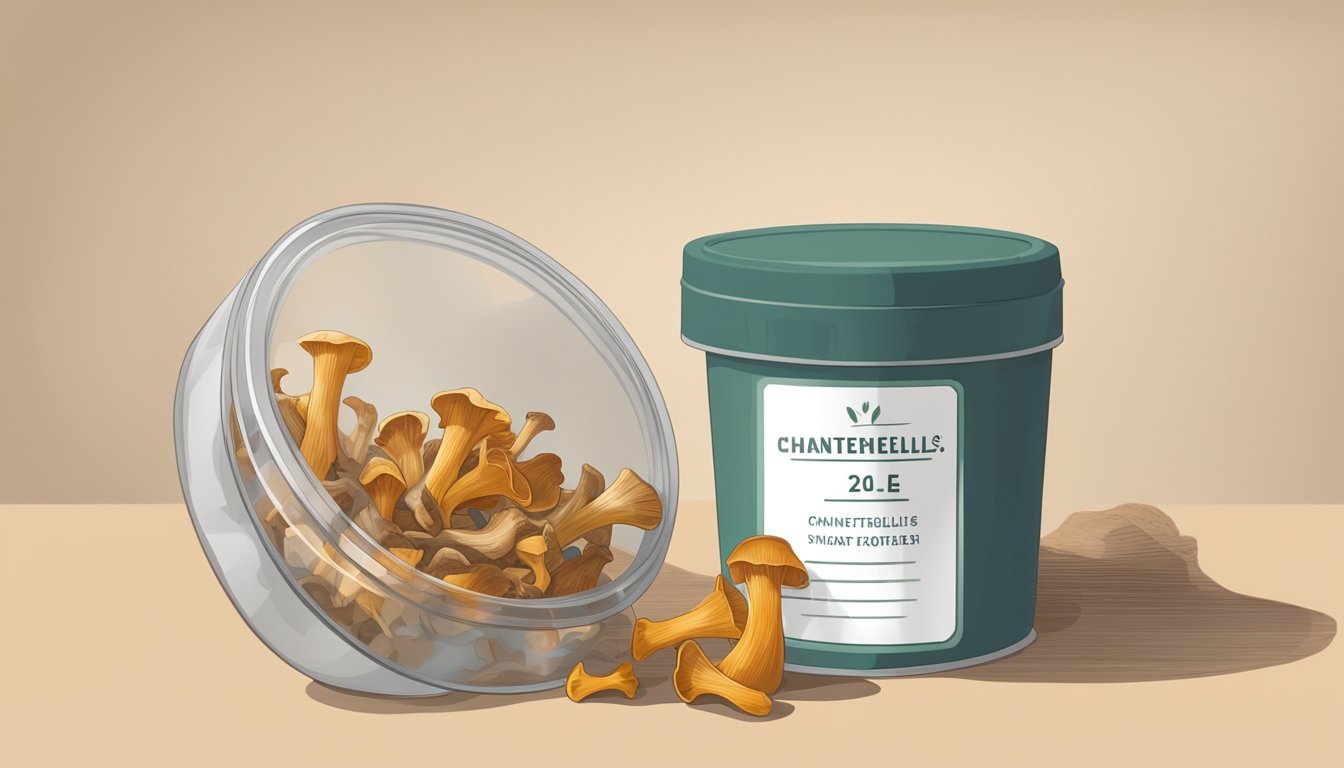How Long Do Dried Chanterelle Mushrooms Last?
Shelf Life and Storage Tips
Dried chanterelle mushrooms (how long do dried chanterelle mushrooms last?) are prized for their rich flavor and versatility in culinary applications. Properly drying chanterelles not only extends their shelf life but also intensifies their taste, making them a sought-after ingredient in a variety of dishes. When stored correctly, dried chanterelles can last significantly longer than their fresh counterparts, allowing enthusiasts to enjoy their unique flavor throughout the year.
The longevity of dried chanterelles largely depends on the storage conditions. They should be kept in a cool, dry place, away from direct sunlight and moisture, which can lead to spoilage. With optimal storage, dried chanterelles can maintain their quality for an extended period.
The shelf life of dried mushrooms (What wine goes well with mushrooms?), including chanterelles, is typically longer than most other preserved foods, potentially lasting for several months or even years. However, understanding the proper drying and storage techniques is crucial to ensure that they remain safe and flavorful as long as possible.
Determining the Quality of Dried Chanterelles
When assessing the quality of dried chanterelles, one should examine their color and appearance closely, along with their aroma and flavor, to ensure they meet the standards of high-quality, preserved fungi.
Inspecting Color and Appearance
High-quality dried chanterelles should maintain a consistent gold to orange hue, indicative of their fresh counterparts. The texture should appear leathery yet pliable. One should look for any signs of discoloration or irregular spots, as these may signal spoilage or improper drying. Uniformity in color and lack of any visible damage are key indicators of good quality dried chanterelles.
Recognizing Aroma and Flavor
The aroma of dried chanterelles should still carry the earthy and meaty notes characteristic of fresh chanterelles, with a subtle hint of apricot. If one detects any off-smells or the absence of the mushroom's inherent scent, this could be a sign of degradation. Upon rehydration, the chanterelles should retain their distinctive flavor profile, rich and woody, without any sour or off tastes. If properly stored in a dark, airtight container, dried chanterelles can retain their aroma and flavor for an extended period, making them a prized ingredient in culinary applications.
Optimal Storage Conditions
For dried chanterelle mushrooms to maintain their quality and prolong shelf life, two critical factors are the regulation of moisture and light exposure, as well as the maintenance of ideal temperature settings.
Managing Moisture and Light
To prevent rehydration and mold growth, dried chanterelles should be kept in an airtight container such as a glass jar or zip-top bag. They must be stored in a cool, dark place away from direct sunlight. This could be a pantry or a cupboard that is not exposed to heat, which could cause condensation inside the container.
Ideal Temperature Settings
The temperature is integral to prolonging the storage life of dried chanterelles. They need to be stored in a consistently cool, dry place. Although not necessary, a refrigerator can be used for long-term storage; however, they must be handled to avoid moisture buildup. A stable temperature of about 60°F (15°C) to 70°F (21°C) is advisable for a pantry. Avoid areas near ovens, stovetops, or heaters to ensure the mushrooms are not subjected to temperature fluctuations.
Preservation Methods
Proper preservation of chanterelles significantly extends their shelf life, with drying and freezing being effective methods. Both approaches inhibit the growth of mold and preserve the mushrooms' quality.
Freezing Chanterelles
To freeze chanterelles, one must ensure the mushrooms are clean and dry. Slicing the mushrooms allows for even freezing and helps conserve space. It is recommended to flash freeze the chanterelles on a baking sheet before transferring them to freezer bags or vacuum-sealed bags. This prevents the mushrooms from sticking together and makes portioning more manageable. In the freezer, chanterelles can maintain their quality for up to one year, although their texture might change slightly.
Rehydrating for Cooking
When one is ready to use dried chanterelles, rehydration is key for cooking. They should soak the mushrooms in a mixture of hot water and a touch of butter or oil to help reconstitute their flavor and texture. A boiling water bath for 20-30 minutes is typically sufficient. After rehydration, chanterelles can be used as if they were fresh, enhancing dishes with their distinct apricot-like flavor.
Common Uses in Cuisine
Chanterelle mushrooms, celebrated for their distinct flavor, are a valued ingredient in various culinary applications. They are particularly notable for their ability to enhance dishes with their rich taste and nutritional benefits, providing vitamins and minerals.
Chanterelle-Inspired Dishes
Soups and Stews: Chanterelles are often used to deepen the flavor profile of soups and stews. They contribute a meaty texture and soak up surrounding juices, enriching the overall taste.
Pasta Sauces and Risottos: Their nuanced flavor makes chanterelles a popular choice for creamy pasta sauces and risottos. They readily absorb seasonings, complementing the creamy texture of cheese and the richness of egg-based sauces.
Pairing with Other Ingredients
Meat: The rich and slightly peppery taste of chanterelles pairs well with meaty dishes, elevating the flavors in poultry, pork, or beef recipes.
Vegetables: Chanterelles also complement a variety of vegetables by imparting a subtle, earthy note that does not overpower the main ingredients.
This mushroom's compatibility with a wide range of seasonings and its ability to retain delicious fungi characteristics while cooked makes it a versatile component in many culinary creations.
Handling and Preparing Dried Chanterelles
When handling dried chanterelles, one must clean them thoroughly before cooking to ensure all dirt and debris are removed. The cooking techniques vary but aim to preserve the delicate texture and rich flavor of the chanterelles.
Cleaning Before Use
Before utilizing dried chanterelles in cooking, they need to be cleaned properly to remove any residual dirt, grit, or debris. To do this:
Place the dried chanterelles in a colander.
Rinse them under cold running water, shaking gently to dislodge any unwanted particles.
It is essential to ensure that the cleaning process is gentle to maintain the integrity of the mushrooms and prevent them from becoming too waterlogged.
Techniques for Cooking
Dried chanterelles should be rehydrated before cooking to restore their tender texture. For rehydration:
Submerge the mushrooms in warm water for approximately 20-30 minutes or until they are fully reconstituted. Check for any remaining grit after soaking.
Once rehydrated and cleaned, chanterelles can be cooked using various methods to enhance their flavor.
For cooking, one can use a skillet or oven:
Skillet: Sauté the mushrooms in a hot skillet with a little bit of oil until they are golden brown.
Oven: Roast the chanterelles in an oven preheated to 375°F (190°C), spread out on a baking sheet, until they are tender.
Steaming is not generally recommended for dried chanterelles post-rehydration as it may not provide the desired texture. However, it is a viable option for fresh chanterelles.
The key is to avoid overpowering the natural, earthy flavor and odor that make chanterelles a sought-after ingredient in many dishes.
Health and Nutrition
Chanterelle mushrooms are valued not only for their unique flavor but also for their nutritional benefits, which cater to a variety of dietary needs.
Dietary Benefits of Chanterelles
Chanterelles are a low-calorie food with a distinctive nutty and fruity flavor, making them a favorite among culinary enthusiasts. They are especially suitable for a vegan diet, offering a source of protein and fiber. In a one cup serving, chanterelles provide roughly 17 calories and about 1 gram of protein, serving as a healthy addition to meals without significantly increasing calorie intake.
The mushrooms also boast a variety of vitamins and minerals. They are particularly rich in Vitamin D, which is crucial for bone health and immune function. Additionally, they supply valuable minerals such as Iron and Copper, with copper being instrumental in energy production and iron being a key component of hemoglobin. Chanterelles offer a spectrum of B-vitamins as well, including Niacin (Vitamin B3), which supports metabolism and skin health, and Pantothenic Acid (Vitamin B5), which aids in the synthesis of coenzyme A.
Nutritional Table for Chanterelles (per 1 cup serving):
Nutrient Amount % Daily Value (DV) Calories 17 — Protein 1g — Carbohydrates 4g — Fiber 2g — Fat 0.3g — Vitamin D 144IU 14% Niacin — 14% Pantothenic Acid — 12% Copper — 21% Iron — —
It is the combination of these nutrients that contributes to the overall health benefits of consuming chanterelle mushrooms. These mushrooms can be a part of various culinary preparations and can be easily integrated into a balanced diet.
Lifespan and Spoilage
Dried chanterelle mushrooms have a notable shelf life and require attention to storage to avoid spoilage. Proper storage ensures they remain usable up to their expiration date.
Signs of Spoilage
Spoilage in dried chanterelles may manifest through several indicators. Mold, having a distinct appearance and fuzzy texture, is a clear sign of spoilage. Discoloration or a damp smell may suggest that bacteria have compromised the mushrooms, and they should not be consumed. If the dried chanterelles exhibit such changes, they must be discarded to prevent the potential risks of consuming spoiled food.
Estimated Shelf Life
The shelf life of dried chanterelle mushrooms typically extends up to one year when stored properly, in a cool, dry place away from moisture. It is crucial to monitor for signs of spoilage as they near their expected expiration date. As the mushrooms age, one must frequently check for spoilage indicators to determine if the product remains safe for consumption. To maximize shelf life, one should store them in airtight containers and ensure they are kept in an environment free of moisture, which catalyzes spoilage.
Foraging and Selection Advice
Before cooking or storing chanterelles, one must know how to select the highest quality specimens during foraging. This involves not only recognizing where and when to find them but also distinguishing the edible chanterelles from any look-alike mushrooms that could be harmful.
Choosing Wild Chanterelles
Foragers seeking chanterelles should prioritize quality, aroma, flavor, and texture in their selection. A successful forager knows that chanterelles:
Grow in wild habitats: Commonly found in hardwood forests, particularly among oak trees, during late summer and fall.
Have a distinctive aroma: Chanterelles emit a fruity smell, comparable to apricots or peaches, which is a good indicator of their freshness and edibility.
Possess a unique flavor and texture: The mushrooms should have a slightly peppery taste and a chewy, pleasant texture when cooked.
Appear visually distinctive: Quality chanterelles are characterized by their ruffled cap, which ranges from deep yellow to orange, and their false gills or blunt ridges running underneath the cap.
When foraging, individuals should always consult with local experts or field guides to ensure proper identification. It's crucial to be cautious of look-alikes such as the poisonous jack-o'-lantern mushroom, which can be mistaken for chanterelles by inexperienced foragers. One must only select chanterelles they are certain are the correct and safe variety.
Unique Varieties and Comparisons
In exploring the longevity of dried chanterelle mushrooms, one must consider the distinct varieties and how they compare to other popular edible mushrooms. These comparisons reveal the chanterelle's unique characteristics and storage potentials.
Differentiating Chanterelle Types
Chanterelle mushrooms, Cantharellus species, are known for their peppery flavor and versatile culinary use. They are easily identifiable by their vibrant golden hue and fleshy, funnel-shaped caps. Commonly encountered species include Cantharellus cibarius and Craterellus tubaeformis, often referred to as the trumpet chanterelle. Each species may slightly influence the efficacy of dehydration and storage longevity.
Cantharellus cibarius: Bright yellow to orange, with a dense texture.
Craterellus tubaeformis: Brown to gray cap, slender and hollow stem, known for a milder flavor.
Comparison with Other Mushrooms
When contrasting chanterelle mushrooms with other edible fungi such as shiitake and porcini, several distinctions become prominent:
Mushroom Type Habitat Flavor Profile Texture Chanterelle Oak and maple forests Mildly peppery and fruity Meaty and chewy Shiitake Grow on decaying wood Rich and smoky Firm Porcini Pine and beech trees Nutty and creamy Smooth and meaty
Chanterelle mushrooms retain their flavor after drying and rehydrate well, standing out in their ability to preserve taste, compared to shiitake which may become more intense and porcini that remains consistent. This quality makes chanterelles particularly favored for their prolonged shelf-life when properly dried and stored.
Culinary Insights
When incorporated into dishes, dried chanterelle mushrooms offer a taste of gourmet fungi year-round. They are a cherished ingredient for restaurant chefs due to their rich flavor that complements a variety of recipes.
Tips from Restaurant Chefs
Proper Storage: Chefs emphasize that dried chanterelles must be stored in an airtight container in a cool, dark place to preserve quality. This method can effectively extend their shelf life, enabling their use in dishes long after the foraging season has ended.
Rehydration: Before adding dried chanterelles to a dish, they should be rehydrated. Restaurant chefs often soak them in warm water or broth to revive their texture and concentrate the flavors. The liquid used can then be incorporated into sauces or soups for an additional depth of flavor.
Culinary Uses: In cooking, dried chanterelles are versatile. They’re frequently used in risottos, soups, and sauces. For a classic application, chefs might add them to a carbonara, where the mushrooms’ robust flavor pairs beautifully with creamy pasta and pancetta.
Flavor Pairing: Professional kitchens value chanterelles for their distinctive taste, which marries well with both meaty and delicate profiles. They suggest pairing dried chanterelles with eggs, chicken, or pork, and using herbs like thyme and parsley to enhance the dish.
By following these tips from seasoned restaurant chefs, one can maximize the longevity and taste of dried chanterelle mushrooms in a variety of delicious culinary creations.
Storing After Opening
Once opened, dried chanterelle mushrooms require proper storage to maintain their quality. The key is to prevent moisture and odors from compromising their taste and longevity.
Maintaining Freshness Post-Opening
To ensure dried chanterelle mushrooms retain their flavor and texture after the package is opened, they should be stored in an airtight container. This container must be placed in a cool place, such as a pantry or a cupboard away from heat sources. Refrigeration can further extend their shelf life, protecting the mushrooms from potential heat fluctuations. It is also important to minimize their exposure to strong odors, as mushrooms can absorb these odors easily, which could affect their natural aroma and flavor profile. The storage area should ideally be dark because light can lead to deterioration in quality over time.
When stored properly, dried chanterelle mushrooms can last for up to 12 months. However, one should always check for an expiration date if provided, and visually inspect the mushrooms before use for any signs of degradation.
Dehydrating at Home
Dehydrating chanterelles at home is a straightforward process that can significantly extend the shelf life of these prized mushrooms. With the right techniques and storage, dried mushrooms can retain their quality for a considerable time.
Home Dehydration Methods
Dehydration methods for chanterelles at home generally fall into three categories:
Air-Drying: This traditional method involves spreading the cleaned and sliced mushrooms in a single layer on a wire rack or a parchment-lined baking sheet. They should be placed in a dry, well-ventilated area away from direct sunlight. While this method can take several days, it is energy-efficient and preserves the mushrooms' natural flavor well.
Oven-Drying: For oven-drying, the mushrooms are placed on a baking sheet and dried at a low temperature (usually between 125°F to 150°F). Oven drying is speedier than air-drying and can take anywhere from several hours up to a full day, depending on the oven and the thickness of the slices.
Using a Dehydrator: A food dehydrator provides a controlled environment for drying and is the most efficient method for dehydrating chanterelles. Mushrooms are arranged in a single layer on the dehydrator trays and dried at a consistent temperature recommended by the dehydrator's manufacturer, which is typically around 125°F.
When stored properly in an airtight container, dried mushrooms can last for up to a year while maintaining their flavor and texture. It is crucial that the container is kept in a cool, dark, and dry place to maximize the shelf life of the dried chanterelles.


